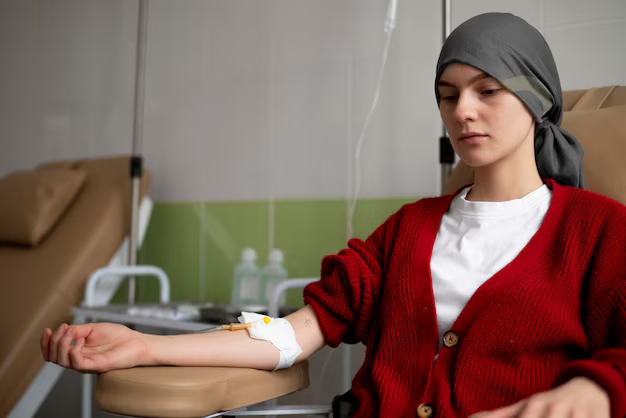Understanding Life Expectancy with Leukemia: What You Need to Know
Leukemia is more than just a diagnosis; it’s a life-altering journey that affects not only those diagnosed but also their loved ones. One of the most pressing questions after a leukemia diagnosis is, “How long can you live with leukemia?” It's a question filled with hope, fear, and countless factors. As we dive into this, it's important to remember that leukemia is not a one-size-fits-all disease; it encompasses multiple types, each with its own prognosis and treatment options.
What Is Leukemia?
Leukemia is a type of cancer that affects the blood and bone marrow, characterized by the overproduction of abnormal white blood cells. These cells crowd out normal cells, impairing the body’s ability to fight infections, control bleeding, and function optimally. Leukemia is categorized mainly into four types:
- Acute Lymphoblastic Leukemia (ALL)
- Acute Myeloid Leukemia (AML)
- Chronic Lymphocytic Leukemia (CLL)
- Chronic Myeloid Leukemia (CML)
Understanding the specific type you or your loved one has can provide insight into life expectancy and treatment plans.
Factors Impacting Life Expectancy
Type of Leukemia
Aggressiveness: Acute forms like ALL and AML progress rapidly and require immediate treatment, while chronic forms like CLL and CML tend to progress more slowly.
Patient Age: Younger patients often have better outcomes due to a higher tolerance for aggressive treatments like chemotherapy and stem cell transplants.
Treatment Advancements
Targeted Therapies: New targeted therapies have changed the landscape of leukemia treatment, allowing for more personalized and effective approaches that can extend life expectancy.
Stem Cell Transplant: This option can offer a potential cure for some patients, significantly impacting survival rates, especially in younger, healthy patients.
Genetic Factors
Certain genetic markers and mutations can influence how well an individual responds to treatment. For example, the Philadelphia chromosome, a genetic abnormality, is often found in CML and can significantly affect treatment approaches and outcomes.
Overall Health and Lifestyle
Patients with strong overall health and no other underlying conditions may respond better to treatment. Factors like non-smoking, maintaining a healthy weight, and a balanced diet can positively impact prognosis.
Survival Rates and Statistics
Survival rates are statistical averages that may not represent individual cases but can provide a framework for understanding general outcomes.
- ALL: The five-year survival rate for children is approximately 85%, while for adults, it's around 35%-40%.
- AML: The overall five-year survival rate is about 27%, with younger patients often having higher survival statistics.
- CLL: This is typically slower-progressing, with a five-year survival rate of about 85%.
- CML: With the advent of tyrosine kinase inhibitors, the five-year survival rate has improved significantly, reaching about 70%-80%.
These numbers highlight the importance of early detection and the impact of advancing treatments.
Emotional and Psychological Factors
Dealing with a leukemia diagnosis involves more than just physical treatment. Psychological well-being plays a significant role in the journey of recovery and management of the disease.
Coping Mechanisms
- Support Groups: Joining a leukemia support group can provide emotional support and practical advice.
- Counseling: Psychotherapy or counseling services can help patients and families cope with depression, anxiety, and stress related to the diagnosis.
Family and Friends Support
The role of a strong support system cannot be underestimated. Family and friends provide emotional support and assistance with daily activities, relieving some of the stress from the patient.
Lifestyle Choices Post-Diagnosis
Living with leukemia involves making informed lifestyle choices that can aid in treatment and improve quality of life.
Diet and Exercise
Maintaining a balanced diet rich in fruits, vegetables, and lean proteins can help in boosting the immune system. Regular exercise contributes to overall well-being and energy levels, helping counteract fatigue.
Routine Check-Ups
Regular medical check-ups are essential to monitor disease progression, manage side effects, and adjust treatment plans as needed.
Avoiding Infections
Due to the weakened immune system, leukemia patients are more prone to infections. Simple practices like regular hand washing, avoiding large crowds during treatment, and staying up-to-date with vaccinations can help reduce the risk.
Hope and Future Directions in Leukemia Treatment
Research and Trials
Continuous research in the field of hematology leads to new treatments and drug approvals, providing hope for extending life expectancy and improving quality of life. Clinical trials offer patients access to cutting-edge therapies that may not be widely available.
Immunotherapy
One of the most exciting advancements has been the development of immunotherapy, which uses the body’s immune system to fight cancer cells. This treatment offers promising results for certain types of leukemia.
Personalized Medicine
Tailoring treatment based on individual genetic makeup has shown significant progress in managing leukemia more effectively.
Navigating life with leukemia is an ongoing journey that involves staying informed about treatment options, maintaining a healthy lifestyle, and seeking emotional support. By understanding the multifaceted nature of this disease, patients and their loved ones can better prepare for and adapt to the challenges ahead.
Summary Table
| Key Takeaways | Details |
|---|---|
| Types of Leukemia | ALL, AML, CLL, CML |
| Factors Affecting Life Expectancy | Type, age, treatment advancements, genetics, overall health |
| Improving Outlook | Targeted therapies, stem cell transplant, lifestyle choices |
| Support | Psychological support, counseling, family involvement |
| Future Directions | Research, immunotherapy, personalized medicine |
💡 Empowerment Tip: Stay proactive, engage with your healthcare team, and explore clinical trials for additional treatment options.

Related Articles
- Can Leukemia Be Cured
- How Do Cats Get Feline Leukemia
- How Do They Test For Leukemia
- How Do You Get Leukemia
- How Do You Test For Leukemia
- How High Are Monocytes In Leukemia
- How Is Feline Leukemia Spread
- How Is Feline Leukemia Transmitted
- How Is Leukemia Diagnosed
- How Long Can You Live With Chronic Lymphocytic Leukemia